Power consumption and loads
The power consumption of the Nvidia Quadro RTX 4000 with a good 9 watts in the idle is exactly where you could expect it, because there is no optical RGB acceleration. However, with every small window movement from the 405 MHz (GPU) and 101 MHz (memory), the clock already speeds up significantly, which can then lead to 20 to more than 30 watts. In normal working (2D workspace and 3D preview) it is a moderate 77 watts and only in the 3D loop is the card with just under 120 watts (OpenGL) or 123 watts (DirectX) is already slightly higher.
Then you also approach the power limit of the card of 125 watts, which you only pass when rendering and maximum rotating fans with then 127 watts. With the best will, more is no longer possible and even a stress test such as Furmark or Luxmark in stress test mode tickles no higher numbers, on the contrary.
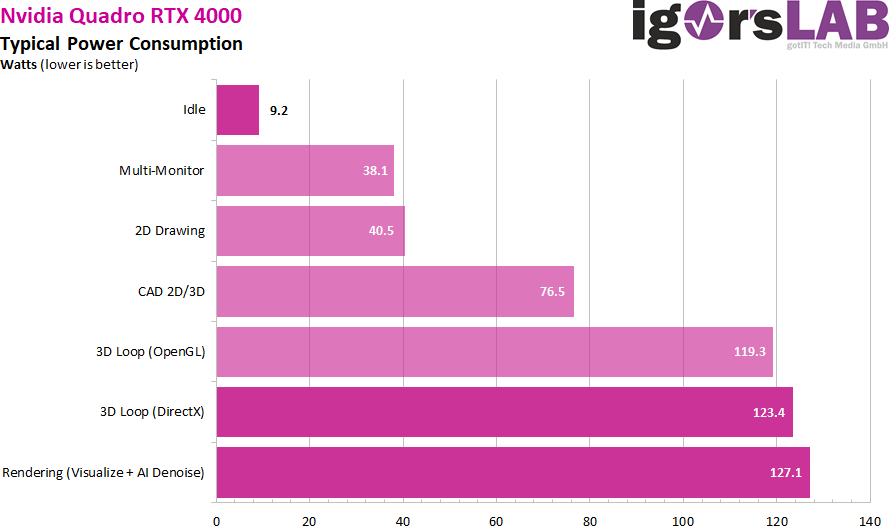
The voltages are in the expected range and do not reach 0.8 volts in the cold state. Sweet spot feeling pure. The average value over the entire runtime tends to be around 0.75 volts and is even just below 0.69 volts for demanding renderings. Now you can see why the cards are so frugal. We can see on the next page what is still possible for a boost clock.
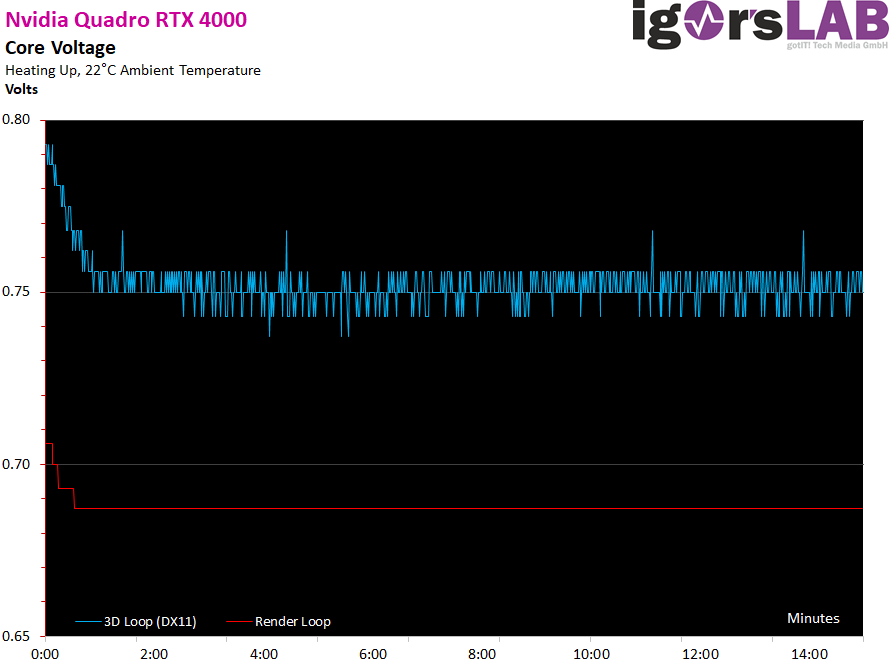
Here again a short excerpt from what the manufacturers of this small Quadro RTX 4000 actually gave in the firmware at limits. Why and why Nvidia installs an 8-pin connector here remains a minor puzzle, because the 6-pin would have been easy enough.
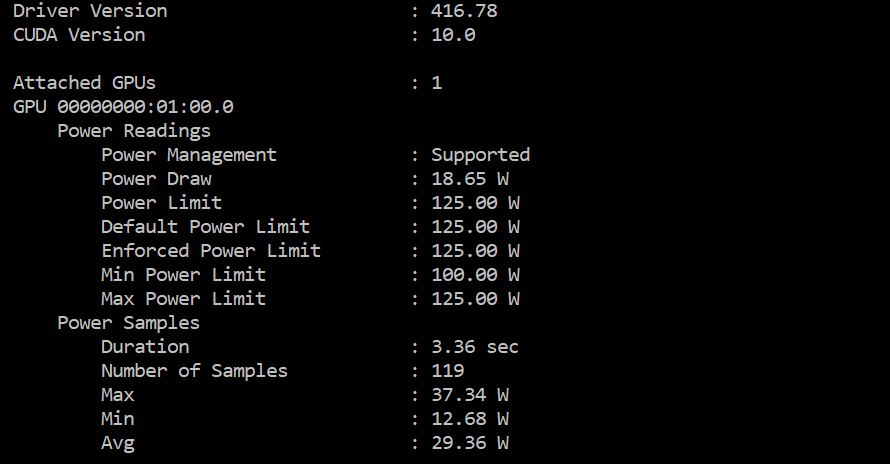
The load distribution on the rails is interesting, because the maximum 4 amperes of the motherboard slot are never exceeded. Balancing has been solved in an exemplary way, although one of the phases also hangs on the motherboard slot, which explains the "high" idle value quite well.
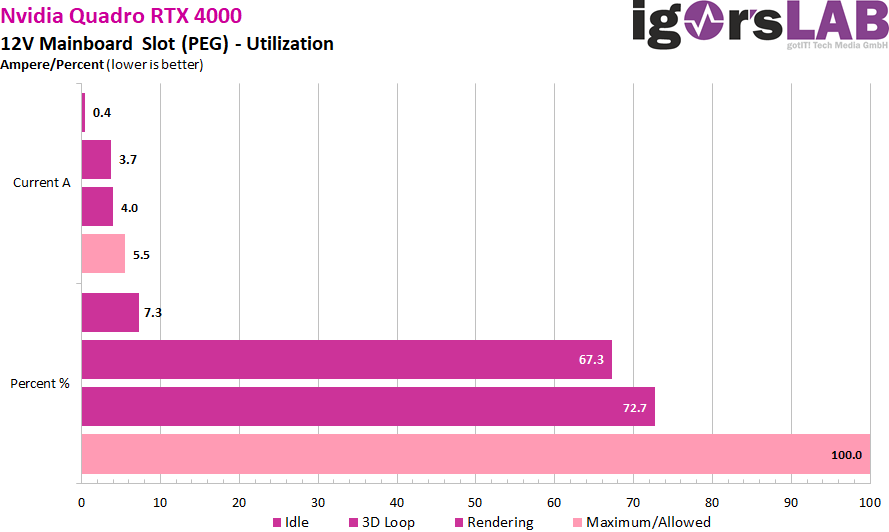
Power supply design and peak loads/currents
As I have already demonstrated in detail in my basic article "The fight of graphics card against power supply – power consumption and load peaks demystified", there are also temporarily higher loads in the millisecond range, which are unfavorable in case of unfavorable designed or improperly equipped power supplies can already lead to unexplained shutdowns. The TBP (Typical Board Power) measured by the graphics card manufacturer or the reviewers does not really help for a stable design of the system.
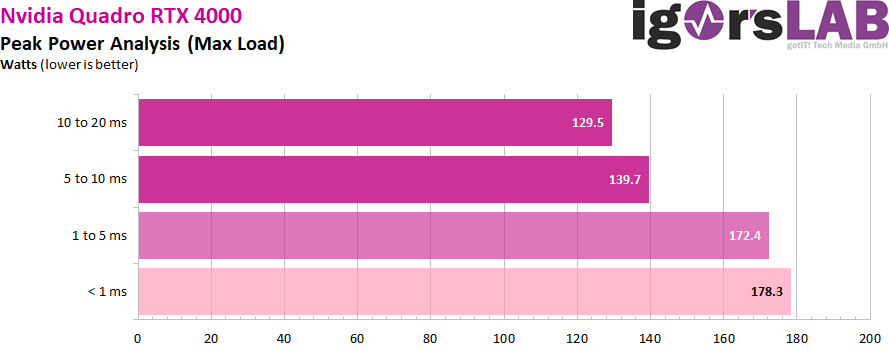
Peaks with intervals between 1 and 10 ms can lead to shutdowns with very fast-reacting protective circuits (OPP, OCP), especially for multi-rail power supplies, although the average power consumption is still in the norm. For the very restrained Quadro RTX 4000 I would therefore calculate with a maximum of 160 watts in order to have enough reserves in case of a case. A short excerpt with high resolution now shows us the 20 ms measurements (10 S intervals), how I run them automatically for valuation:
Detailed recording of average power consumption and flowing currents
As usual, I now also set aside the power consumption and the flowing currents as detailed graphics of my oscillograph measurements. A service that hardly anyone else offers and which shows how the map "ticks" in detail:
- 1 - Einführung und Datenblatt
- 2 - Tear Down: Platine und Kühler im Detail
- 3 - Visualize 2019, Arion, Luxmark
- 4 - Solidworks 2017
- 5 - Autodesk AutoCAD 2018 , Maya 2017 und 3ds Max 2015
- 6 - Creo 3 (M190)
- 7 - SPECviewperf 13
- 8 - GDI und Treiberdurchsatz
- 9 - Leistungsaufnahme, Lastspitzen und Netzteilempfehlung
- 10 - Takt und Temperaturen
- 11 - Lüfter und Lautstärke
- 12 - Zusammenfassung und Fazit











































Kommentieren